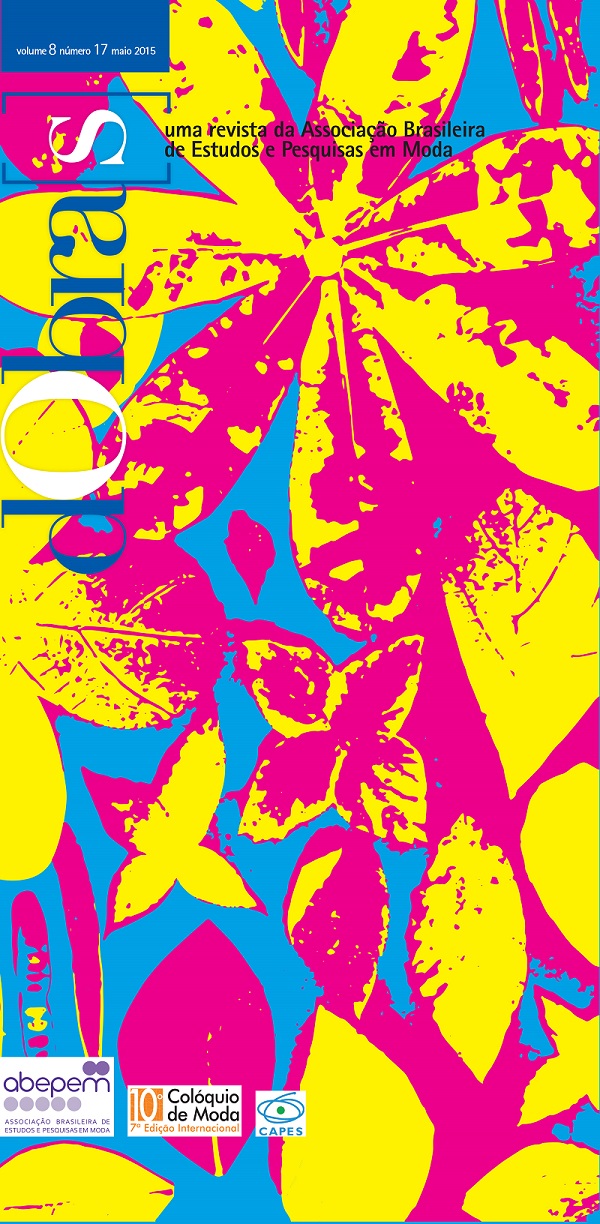Substraction Cutting applied to sustainable fashion design
DOI:
https://doi.org/10.26563/dobras.v8i17.8Keywords:
subtraction cutting, modelling technique, methodology, sustainable fashion.Abstract
This paper presents the results of the application of Substraction Cutting modelling technique — created and disseminated by author and designer Julian Roberts in his book Free Cutting (2012) — to apparel production line as a possible projection methodology for sustainable fashion design.Downloads
References
BARROS, Diana Luz Pessoa de. De la perfección: dos reflecciones. In: LANDOWSKI, Eric; DORRA, Raúl; OLANICET, Anne. Colagens Têxteis: em busca de um design sustentável. Aveiro, 2012. Tese (Doutorado em Design) – Universidade de Aveiro, Portugal.
ELKINGTON, John. Canibais com garfo e faca. São Paulo: Makron Books, 2001.
FLETCHER, Kate; GROOSE, Lynda. Moda e sustentabilidade: design para mudança. São Paulo: Senac, 2011.
GWILT, Alison. Producing sustainable fashion: the points for Positive Intervention by the Fashion Designer. In: GWILT, Alison; RISSANEN, Timo Shaping Sustainable Fashion: changing the way we make and use clothes. London: Earthscan, 2011. DOI: https://doi.org/10.4324/9780203126172
______; RISSANEN, Timo. Shaping Sustainable Fashion: changing the waywe make and use clothes. London: Earthscan, 2011.
MANZINI, Ezio; VEZZOLI, Carlo. O desenvolvimento de produtos sustentáveis: os requisitos ambientais dos produtos industriais. São Paulo: Edusp, 2008.
ROBERTS, Julian. Free Cutting. 2012. Disponível em: <http://timorissanen.com/2013/08/11/julian-roberts-free-book>. Acesso em: 19 fev. 2014.
RUTHSCHILLING, Evelise Anicet; SANTOS, Aguinaldo dos. Design para consumo sustentável de roupas. Anais 1st International Fashion and Design Congress – CIMODE. Universidade do Minho, Portugal, 2012.
VEZZOLI, Carlo. Design de sistemas para a sustentabilidade: teoria, métodos e ferramentas para o design sustentável de “sistemas de satisfação”. Salvador: EDUFBA, 2010
Downloads
Published
How to Cite
Issue
Section
License
The copyrights of the works published in this journal belong to the author, and dObra[s] holds the rights of first publication. Due to their publication in this open access journal, any work here is free to use, with its own attributions, in educational and non-commercial applications.










